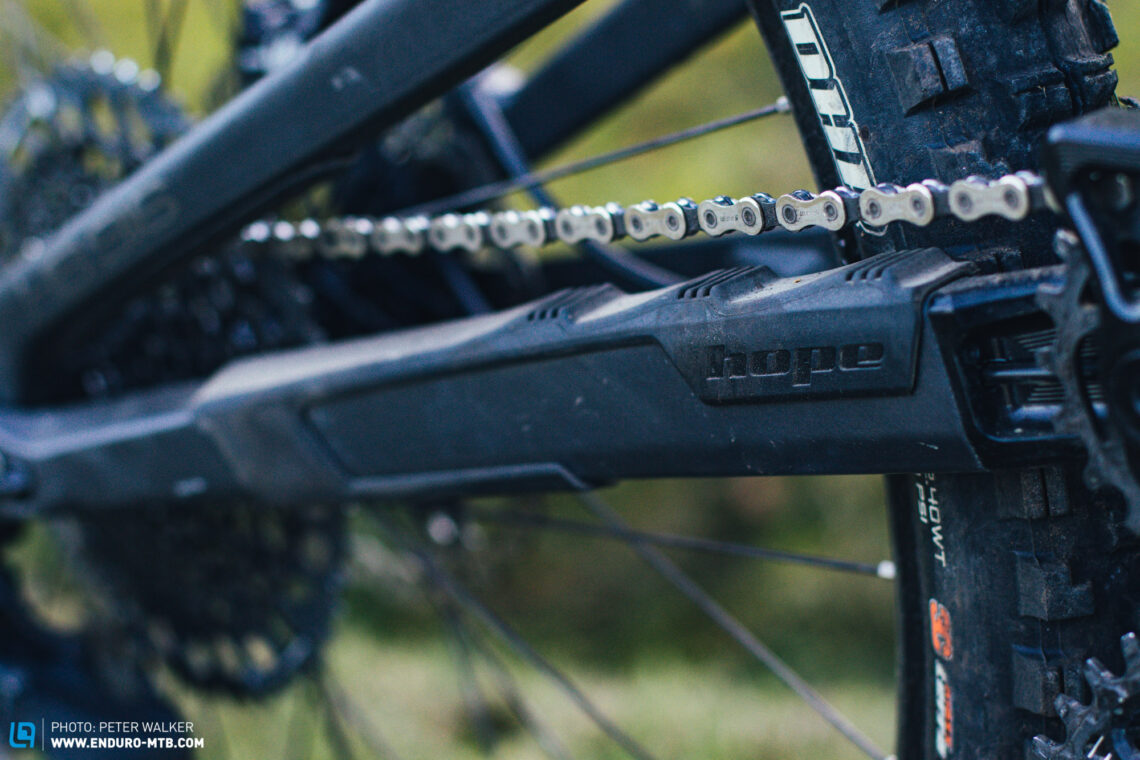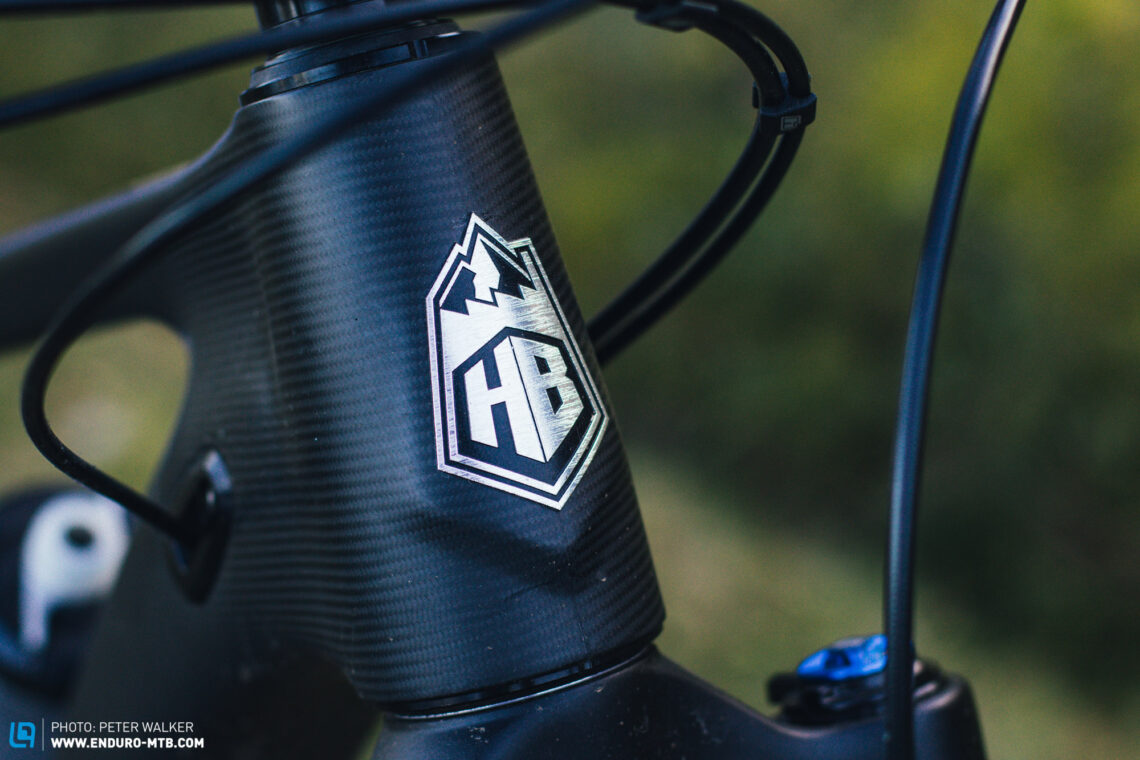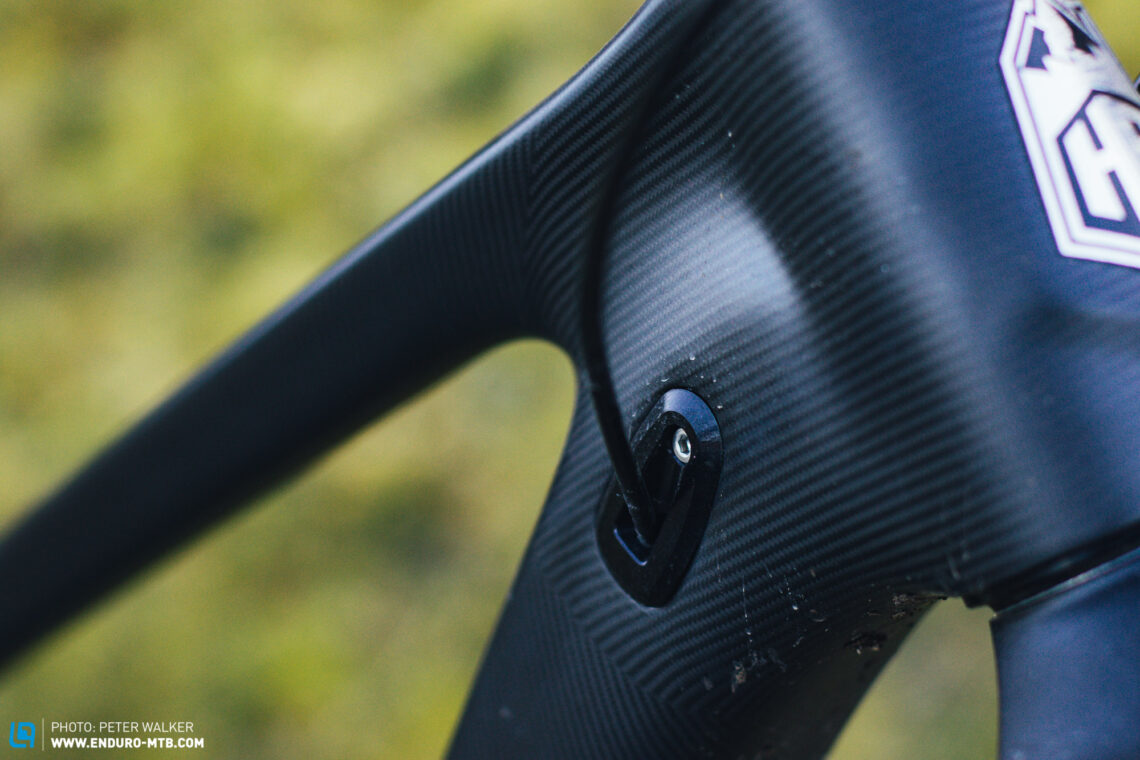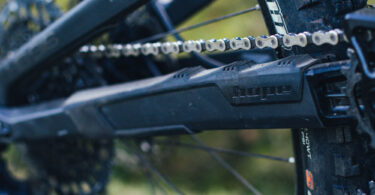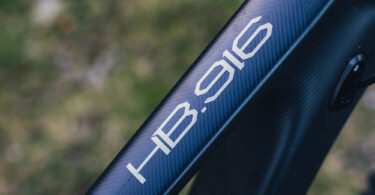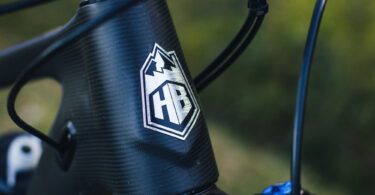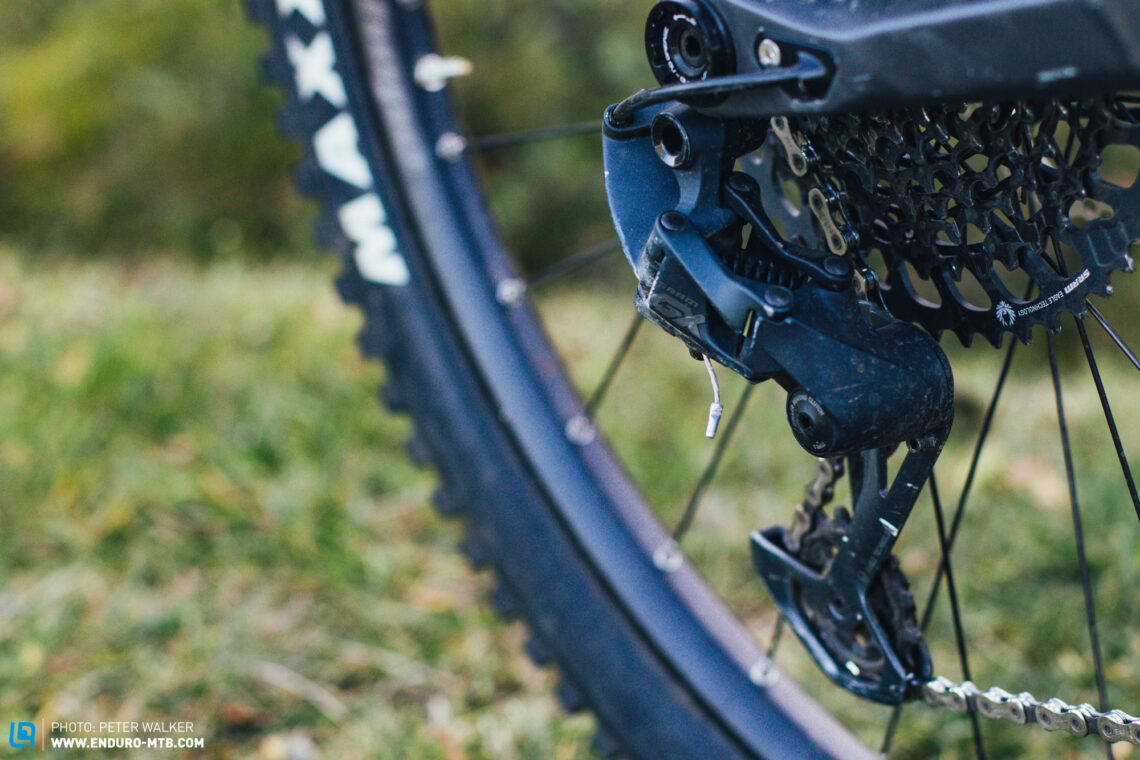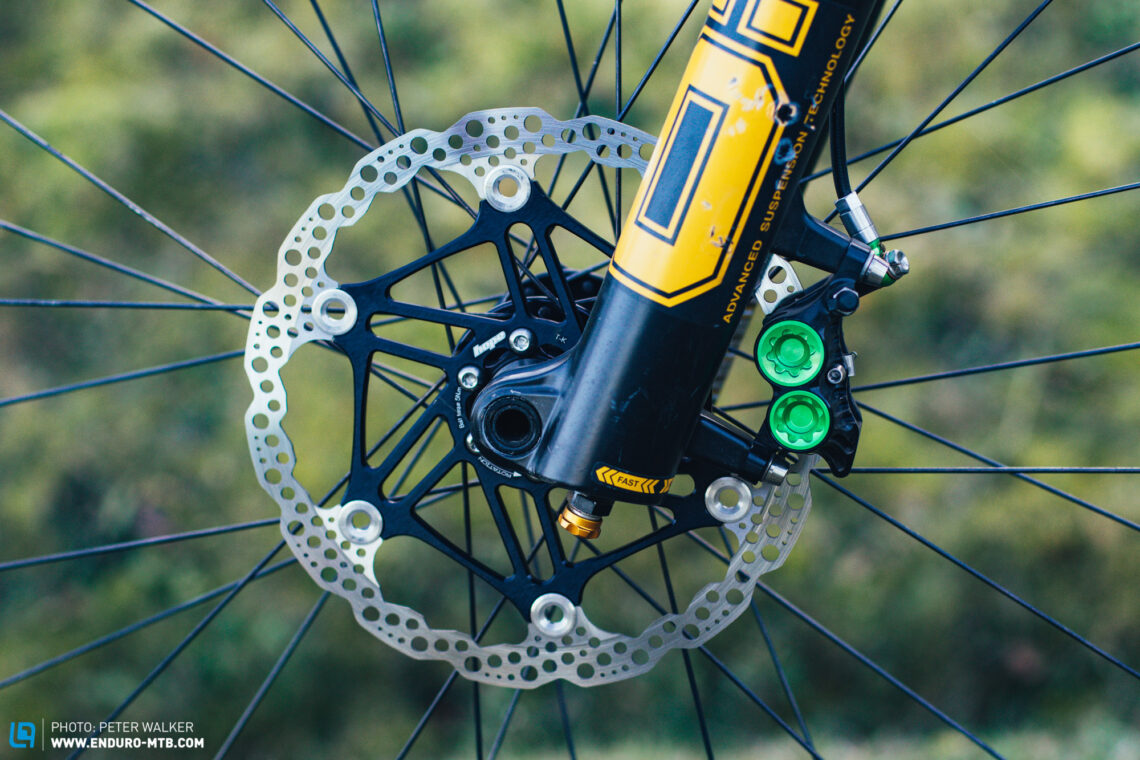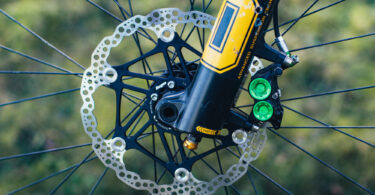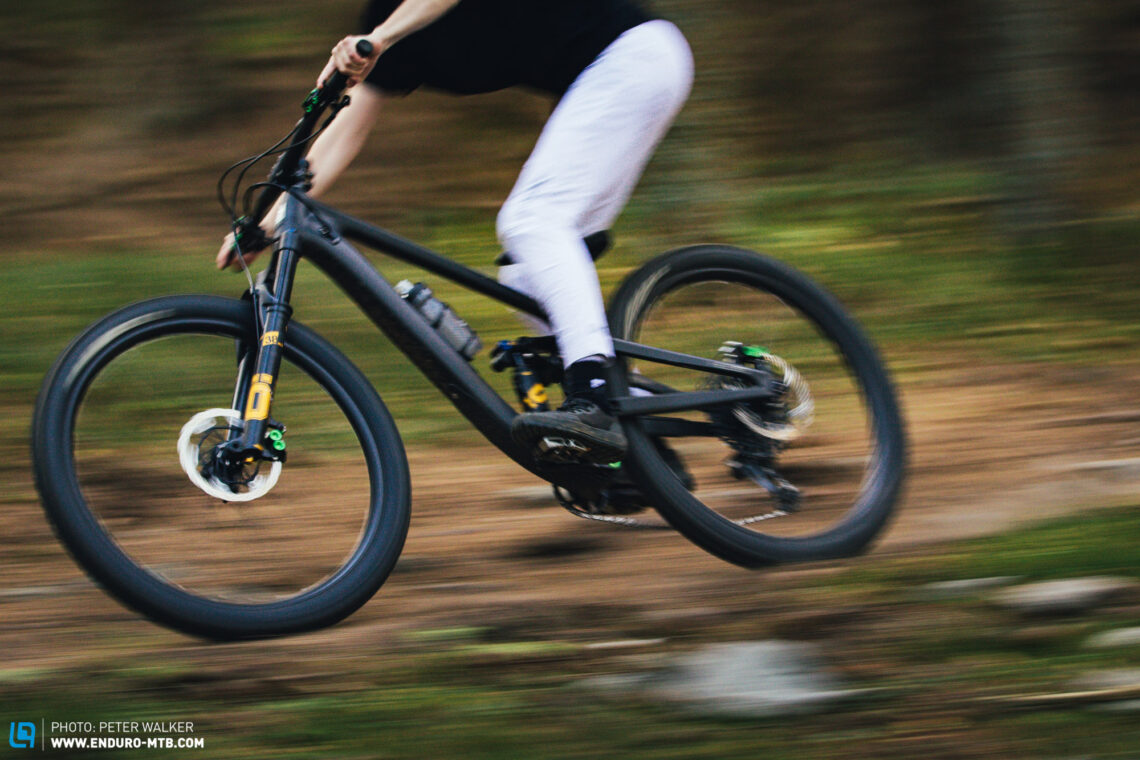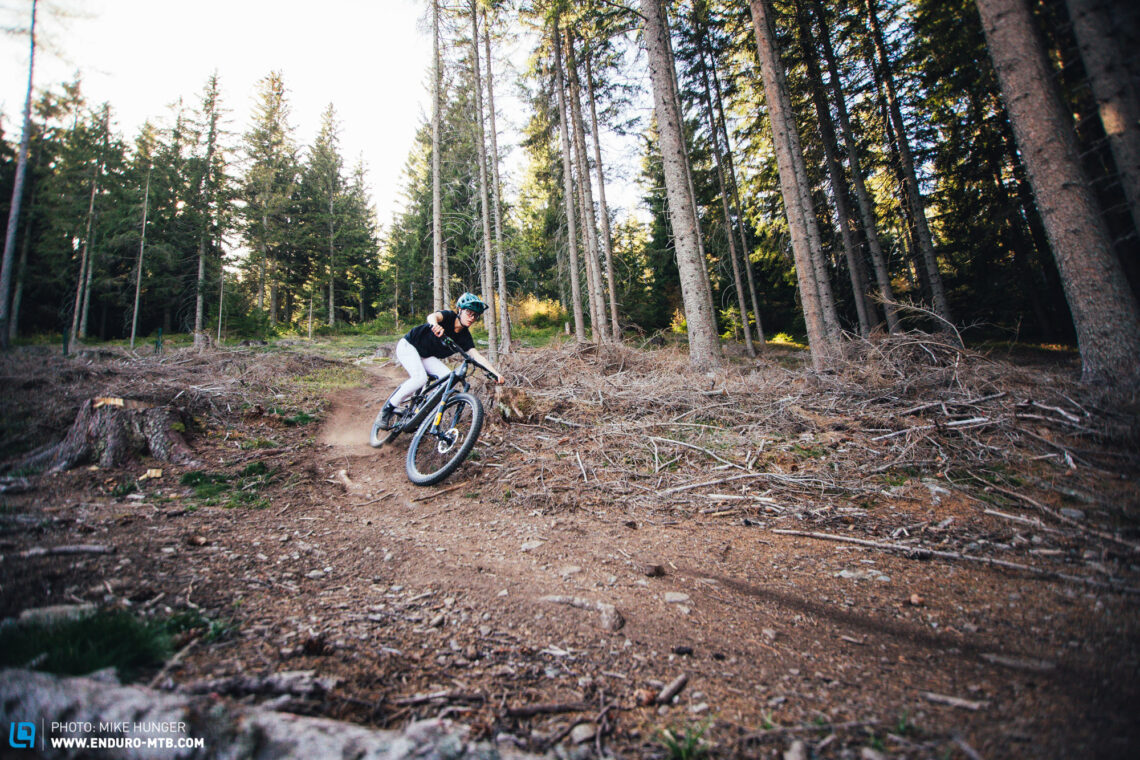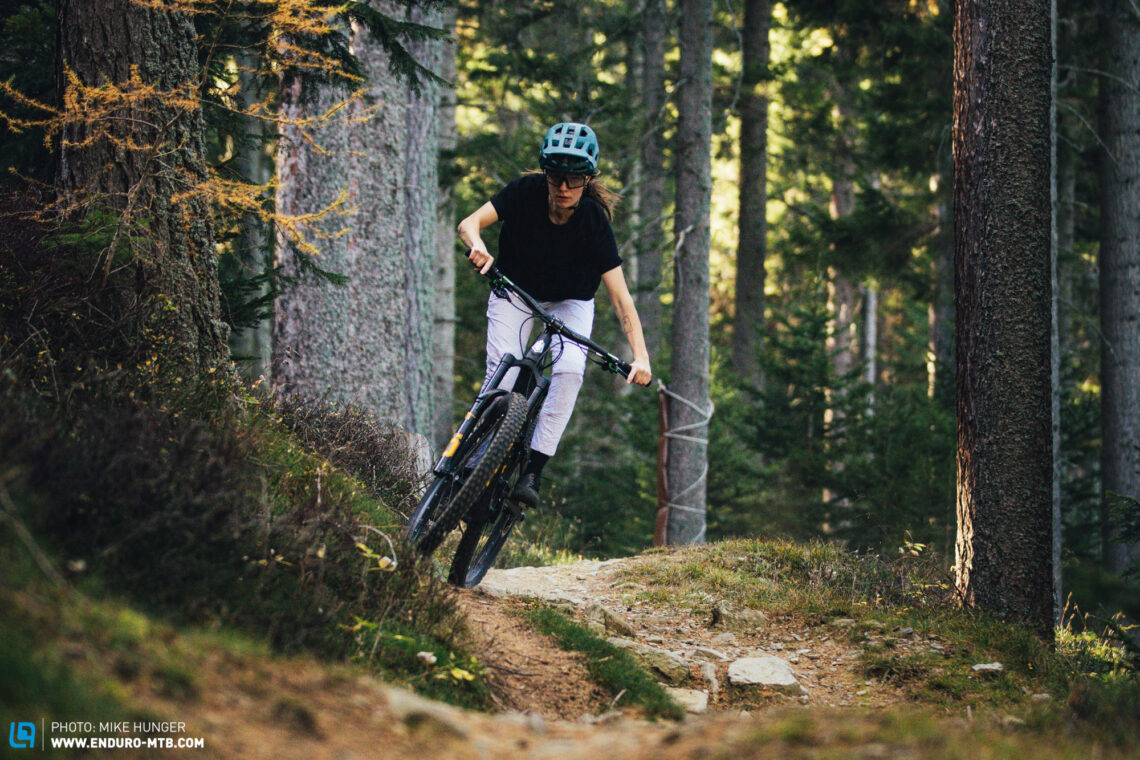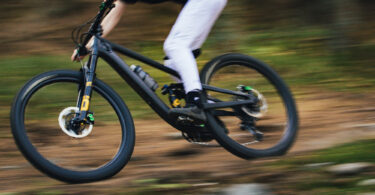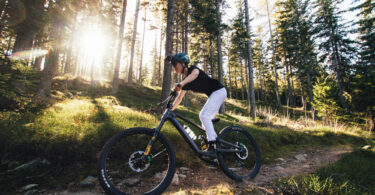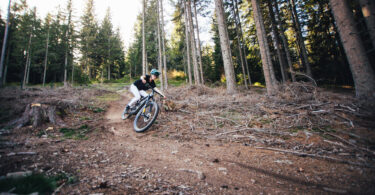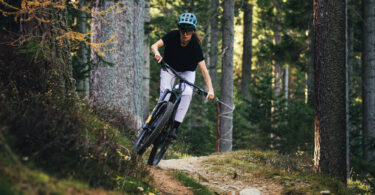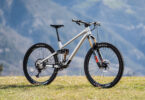The 2022 Hope HB916 is the latest bike to come from the premium UK brand. For their all-new platform, Hope rely on a carbon frame with a high-pivot rear end that’s got nothing in common with its predecessor. We put the exotic bike to the test to find out how it performs on the mainland.
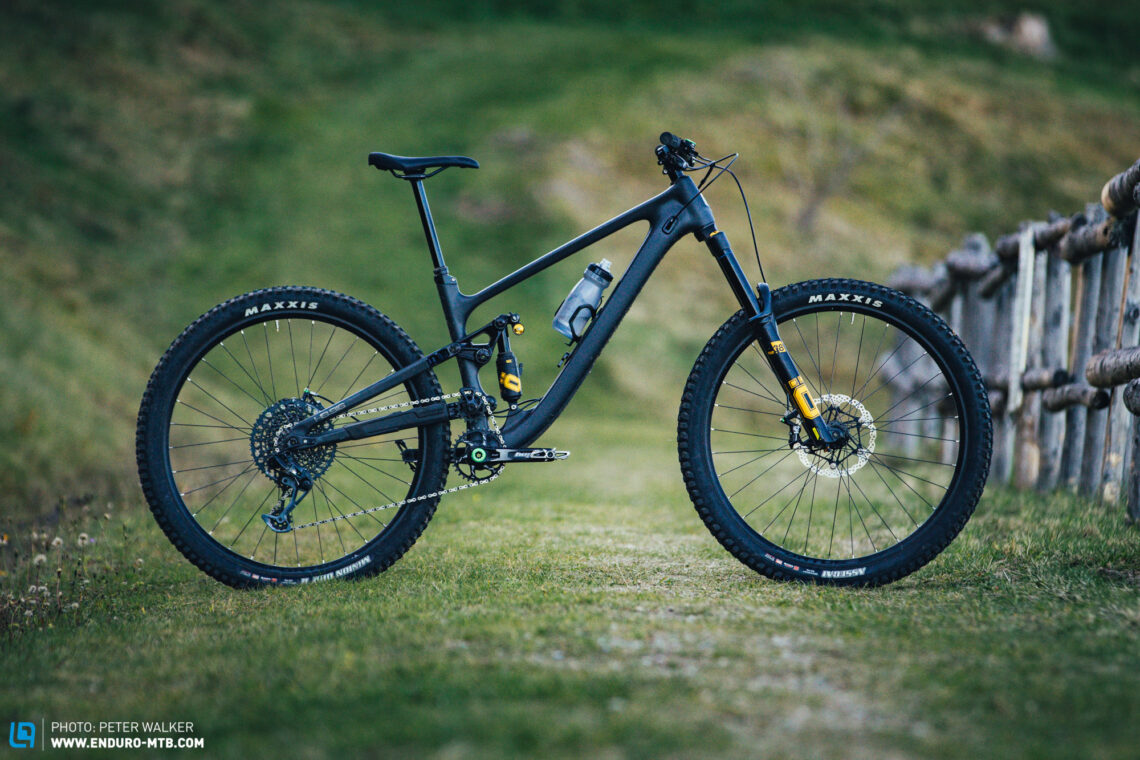
Most of you will know of Hope as a premium brand that produces high-end components like their hubs, brakes and cranks, machined from aluminium and available in a wide range of anodised colours. But Hope started manufacturing their own carbon frames some years ago, handmade in their factory in Barnoldswick, UK, no less. In doing so, Hope have drawn on their CNC expertise, machining the necessary moulds in-house. The Hope HB916 is replacing the previous HB160 as the British brand’s enduro bike. For this latest model, they’ve scraped the previous rear end design and opted to go with the trend of high-pivot linkages. The chainstays are joined to the font triangle via a pivot point located high above the bottom bracket, hence the name high-pivot linkage. This allows the rear wheel to have a rearward axle path as the suspension compresses, not just moving up but also backwards as it hits obstacles. Ultimately, it promises to make for an even smoother ride in rough terrain. However, it also results in significant chain growth since the axle moves away from the bottom bracket, pulling the cranks backwards. To reduce the chain growth and thereby counteract this pedal kickback, the chain must be routed around an idler.
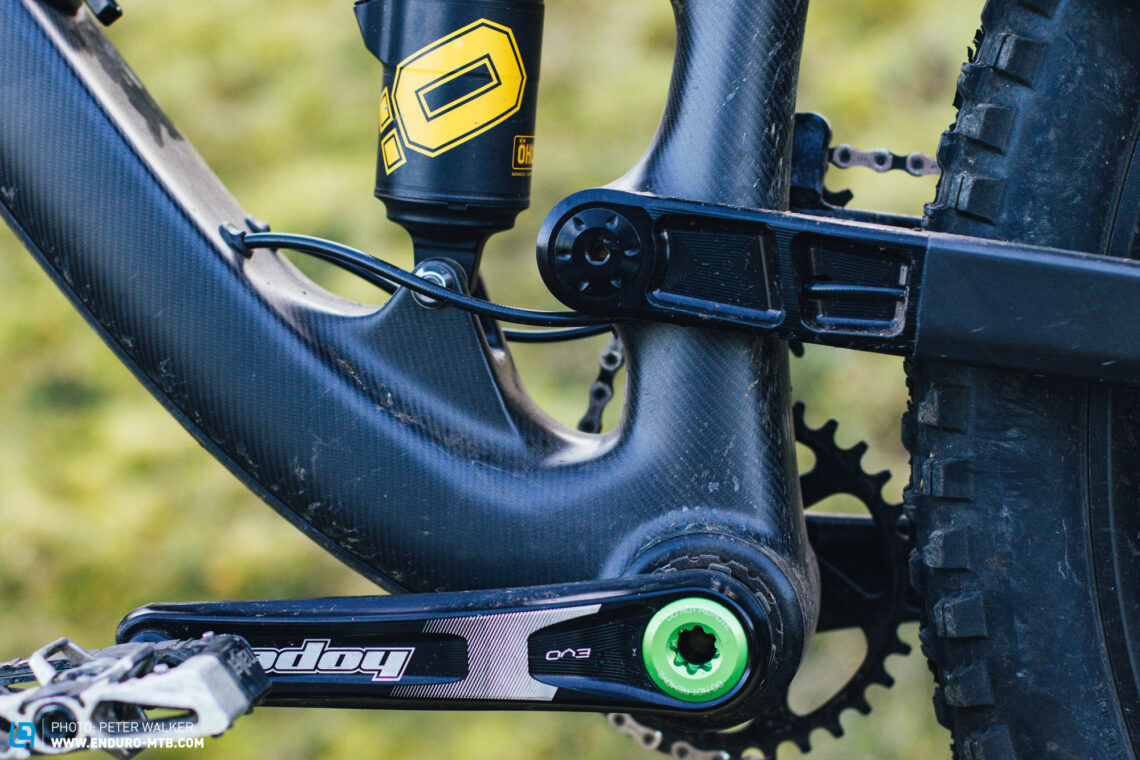
Hope equip the HB916 with a 170 mm fork to go with the 160 mm travel offered by the high-pivot rear end, and thanks to the flip chip, you can choose whether you want to ride it as a pure 29er or run it as a mullet setup with a 29er up front and 27.5″ wheel out back. To call one of these exotic bikes your own, you’ll have to hand over € 8,400.
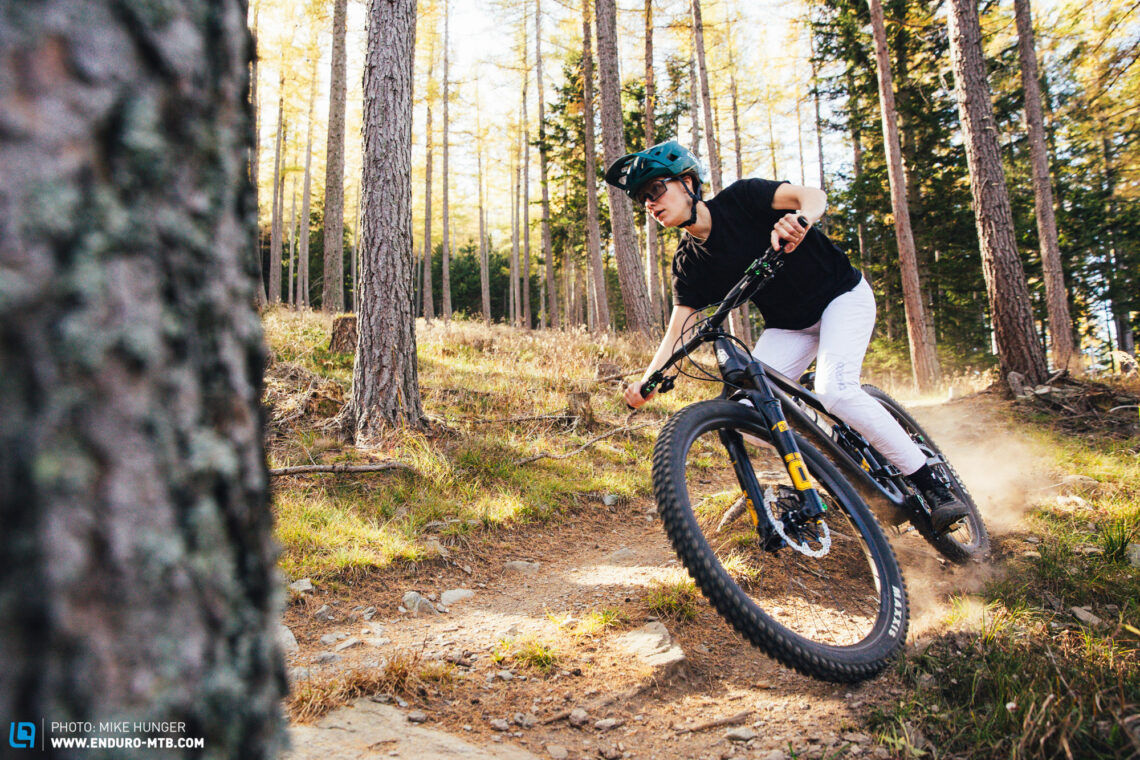
The 2022 Hope HB916 in detail
If you take a closer look, attentive folks will notice that the frame isn’t made entirely of carbon. The ends of the seat and chain stays are made of machined aluminium, relying on a hybrid carbon and aluminium construction. As such, the bearings of the pivot points are fitted into aluminium sockets, which Hope claim should extend the service life of the frame and the bearings. However, the front triangle is a full carbon construction. Instead of going for a striking colour scheme, Hope opted for a clear coated carbon look and subtle details on our test bike. If you prefer something a little louder, you’ll be more than happy with the conspicuous chameleon colour scheme – barring the € 600 surcharge.
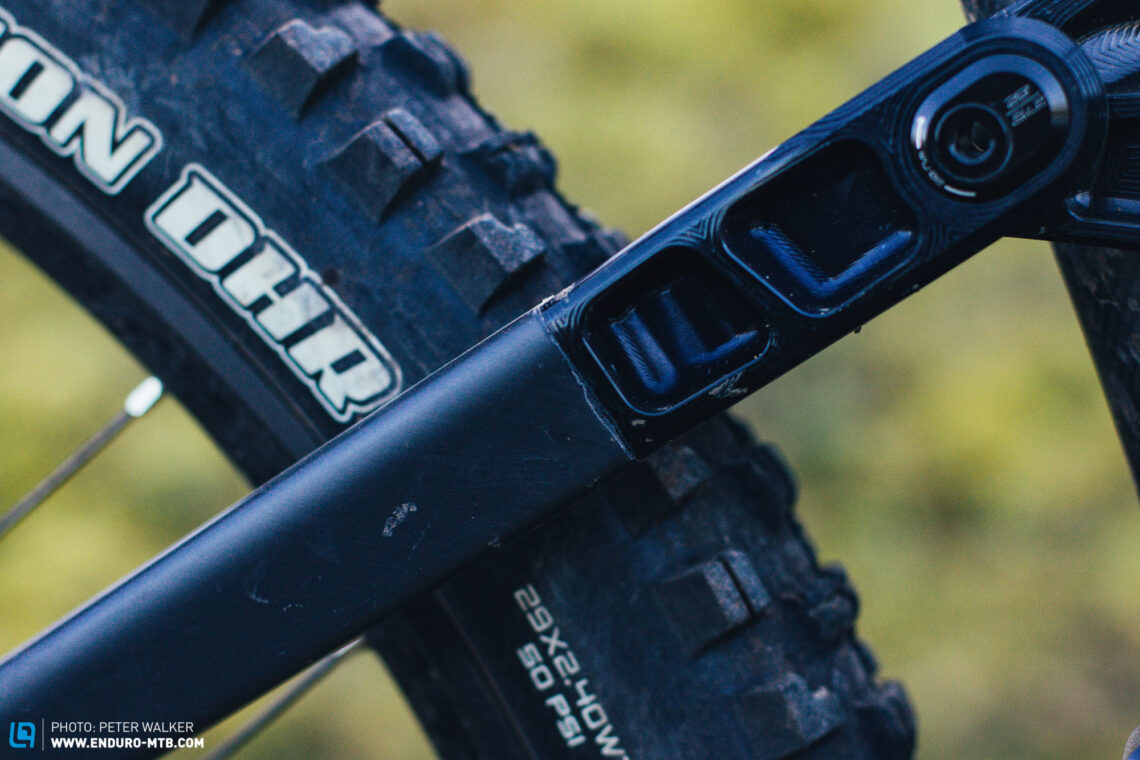
As you might have guessed already, the idler is attached to the chainstay via a machined aluminium bracket. Hope have also integrated a storage compartment into the down tube of the HB916. The machined aluminium lid and lever make a high-quality impression and thanks to the rubber seal, you can ride assured that your goods will stay dry even if it’s wetter than an otter’s pocket. Unfortunately, the compartment doesn’t have a floor. As such, we’d advise against stowing small, loose items in the compartment and put everything in the included pouch instead. The cables are routed internally and are fed into the frame via ports that sit relatively far behind the head tube. The bottom section of the down tube is covered in a large yet relatively thin protector to fend off flying stones, tree stumps and the like. The wavy chainstay protector is rather short, but it does the job and reliably keeps the bike quiet.
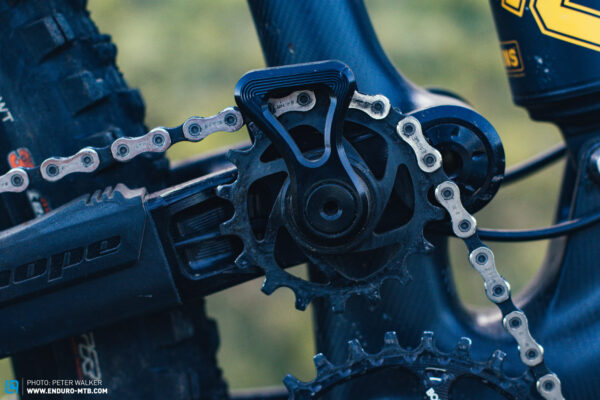

The components of the 2022 Hope HB916
Hope offer two build variants of the 2022 HB916, with the only difference between the two being the drivetrain. The model on test relies on a SRAM GX drivetrain and costs € 8,400, whereas the more expensive version comes equipped with a SRAM X01 drivetrain and will set you back by € 8,700. Weighing in at 15.6 kg in size H3, our test bike certainly isn’t a flyweight, though it isn’t overly heavy for an enduro bike.

Hope HB916
€ 8,400
Specifications
Fork Öhlins RXF 38 M.2 170 mm
Rear Shock Öhlins TTX Air 160 mm
Seatpost OneUp Dropper Post V2 210 mm
Brakes Hope Tech4 V4 200/200 mm
Drivetrain SRAM GX Eagle 1x12
Stem Hope Gravity 35 mm
Handlebar Hope Carbon 800 mm
Wheelset Hope Fortus 30SC/ Hope PRO4 29"
Tires MAXXIS ASSEGAI MaxxTerra EXO+/MAXXIS MINION DHR II MaxxTerra EXO+ 2.4"
Technical Data
Size H1 H2 H3 H4
Weight 15.6 kg
Specific Features
storage compartment
flip chip
The first thing you’ll notice on our build? Hope components as far as the eye can see! Of course, the British brand have seized the opportunity to spec the HB916 with as many in-house components as possible. As usual, Hope give you a vast range of anodized colours to choose from for all their components – a dream come true for all fans of colour matching and customisation. We were struck by the beautiful Hope Tech 4 V4 brakes on the HB916 in particular. The brake levers allow you to adjust the bite point and reach without tools, using high-quality aluminium dials that we’re sure will bring tears of joy to all die-hard lovers of aluminium. However, the levers are rather long, which means that the shifter, which is neatly attached to the brake lever clamp, is positioned quite far away from your thumb. On the trail, the brakes offer excellent modulation and braking power, though they could have a little more bite. You get 200 mm Hope brake rotors front and rear, which you’ll be happy about on long descents.

For the cockpit, Hope combine their in-house 800 mm carbon handlebar with a stubby 40 mm Hope Gravity stem. You’ll find plenty of markings on the handlebar to help you cut it precisely to your desired length and align the brake levers evenly on either side, which is very convenient. As with the other in-house components, you’ve got a wide range of colours to choose from for the stem. Coming to the wheels, we start reaching the end of the list of in-house components, consisting of Hope Fortus 30 SC aluminium rims laced to legendary Hope Pro 4 hubs.

For the suspension on our test bike, Hope rely solely on Öhlins. You get the RXF 38 m.2 fork with burly 38 mm stanchions up front, providing 170 mm travel. The fork doesn’t rely on just one but two air chambers: the main chamber and the ramp-up chamber. The main chamber lets you adjust the spring rate as you would with any air spring, whereas the ramp-up chamber allows you to tune the degree of progression that the fork offers. That way, there’s no need for volume spacers and the progression can be fine-tuned steplessly. Once you’ve got the air chambers dialled in, you can adjust the high- and low-speed compression as well as the low-speed rebound. At the rear, Hope pair the fork with an Öhlins TTX Air TM shock, controlling 160 mm travel. As on the fork, it lets you adjust the high- and low-speed compression and the low-speed rebound. If you’re not convinced of the Öhlins air shock, you can opt for one of the two Öhlins TTX22M or FOX DHX2 coil models, or the FOX FLOAT X2 air shock instead. The choice is yours as any of the above shock options are included in the price. To take the guesswork out of the shock setup, Hope have integrated a relatively simple sag indicator into the rocker link: simply take a seat on the bike and check if the 30% sag indicator and the marking on the bearing cover line up.

The 210 mm OneUp Dropper Post V2 puts you into a comfortable pedalling position on the climbs while providing ample freedom of movement on the descents. You can insert the dropper all the way into the frame, which is good news for short-legged riders. For the tires, Hope rely on a 2.5″ MAXXIS ASSEGAI up front, paired with a 2.4″ MAXXIS Minion DHR II on the rear. Unfortunately, they must both make do with the flimsy EXO+ casing. The thicker Doubledown casing would have been a better fit for the bike’s intended use. The tires also feature the hard-wearing MaxxTerra rubber compound. For the front tire, the softer and grippier MaxxGrip compound would have made more sense.
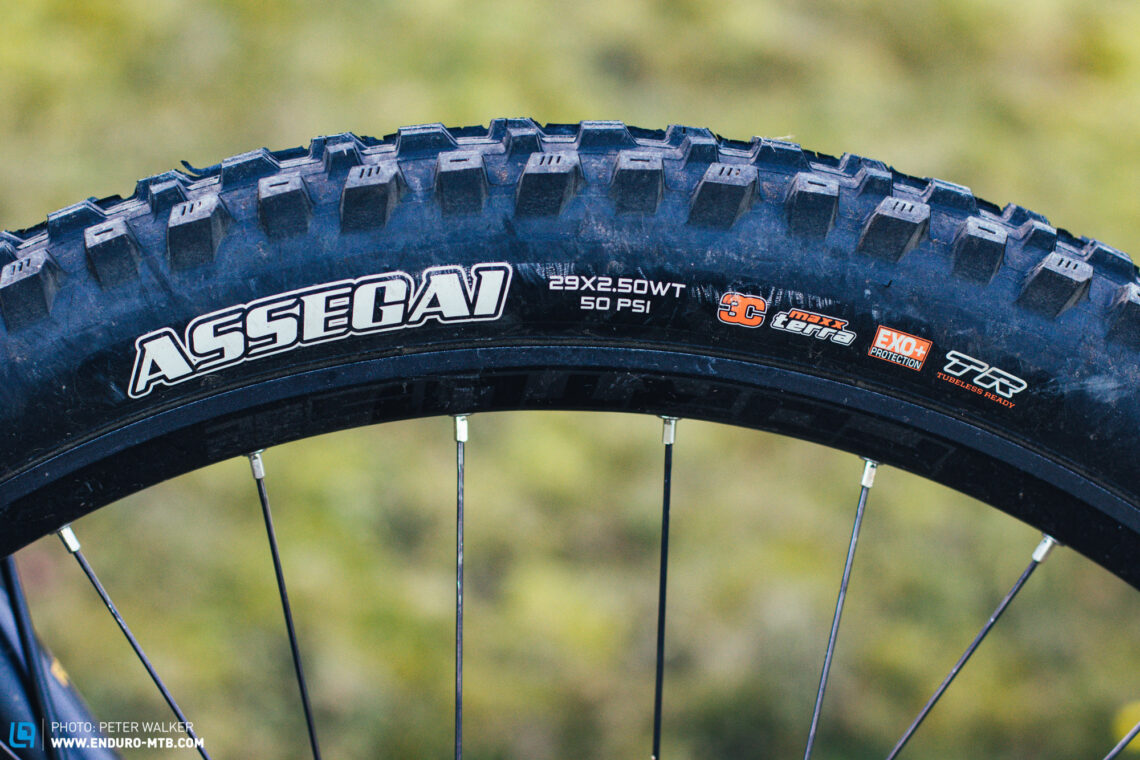
The geometry of the 2022 Hope HB916
The Hope HB916 is available in sizes H1 to H4, with H1 being the smallest and H4 the largest. There’s a 20 mm difference in reach between the sizes, starting at 450 mm in H1 and ending at 510 mm in H4. By rotating the upper headset cup, the head angle can be adjusted from 64° to 63.3°. The chainstays remain at 440 mm for all frame sizes. In size H3 the seat tube measures 440 mm, growing as tall as 470 mm in H4. That’s slightly too long for our taste – keeping it shorter would provide more freedom of movement on the trail. Thanks to the flip chip on the seat stays, you can choose between a 29″ or 27.5″ rear wheel, with the latter option shortening the wheelbase slightly.
The geometry of the 2022 Hope HB916 in the standard settings
| Size | H1 | H2 | H3 | H4 |
|---|---|---|---|---|
| Seat tube | 395 mm | 410 mm | 440 mm | 470 mm |
| Tob tube | 583 mm | 606 mm | 631 mm | 655 mm |
| Head tube | 100 mm | 110 mm | 120 mm | 130 mm |
| Head angle | 64° | 64° | 64° | 64° |
| Seat angle | 78° | 77.9° | 77.7° | 77.5° |
| Chainstay | 440 mm | 440 mm | 440 mm | 440 mm |
| BB Drop | 30 mm | 30 mm | 30 mm | 30 mm |
| Wheelbase | 1230 mm | 1254 mm | 1278 mm | 1303 mm |
| Reach | 450 mm | 470 mm | 490 mm | 510 mm |
| Stack | 628 mm | 637 mm | 646 mm | 655 mm |

Riding the 2022 Hope HB916
When you swing your leg over the Hope HB916 and make your way to the trailhead, the bike puts you in a nicely balanced and centred riding position. It feels efficient and integrated with the bike. The rear end hardly bobs as you pedal, and there’s no need to close the compression lever of shock. Thanks to the steep seat tube angle and upright riding position, it’s easy to keep the front wheel weighted on steep climbs, so it stays planted and in control.

On the trail, the HB916 strikes a good balance between composure and agility. Instead of just riding in a straight line, it changes direction willingly. As such, the bike invites you to get playful, chucking it from one corner into the next and letting the rear wheel drift every now and then. Compared to other high-pivot bikes, like the Norco Range, the elongation of the Hope HB916 is relatively moderate, which results in more consistent handling. The suspension is on the firmer end of the spectrum, offering plenty of support and pop. It encourages you to get airborne whenever possible, letting you turn rollers into jumps and boost off everything that resembles a lip. You can also pump it through compressions and berms without the suspension bottoming out, allowing you to generate lots of speed. However, you’ll need to shift your weight forward to keep the front wheel from sliding out through the corners. Upgrading the front tire to a model with a softer and stickier rubber compound and a thicker casing so you could run a lower tire pressure would mitigate this problem. Another positive aspect of the HB916 is that it’s super quiet, which is good news for your and your fellow trail riders’ ears.
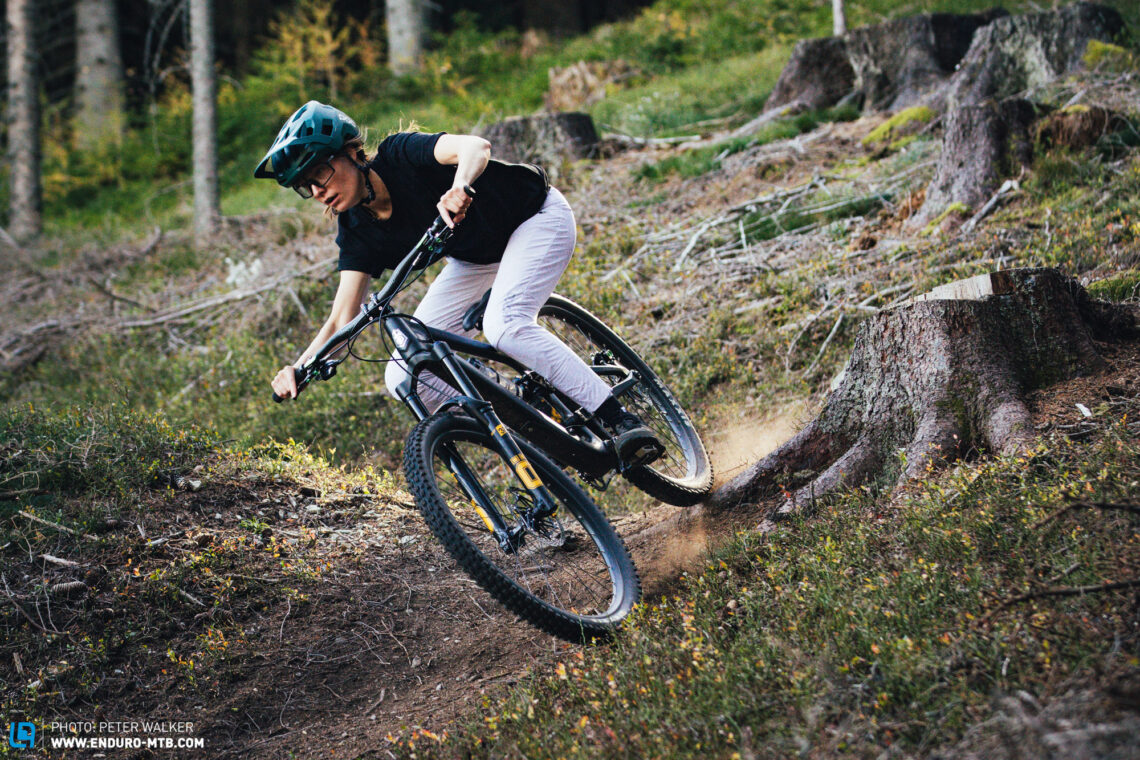
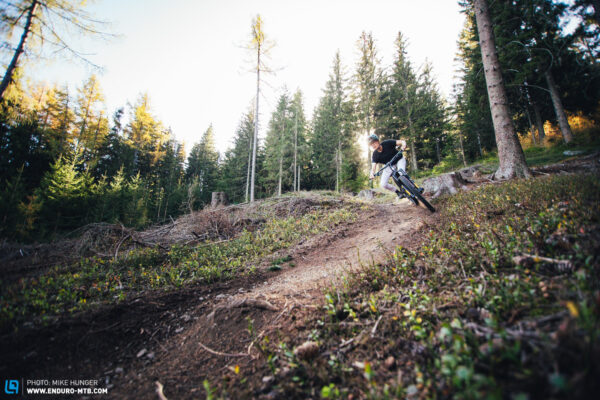
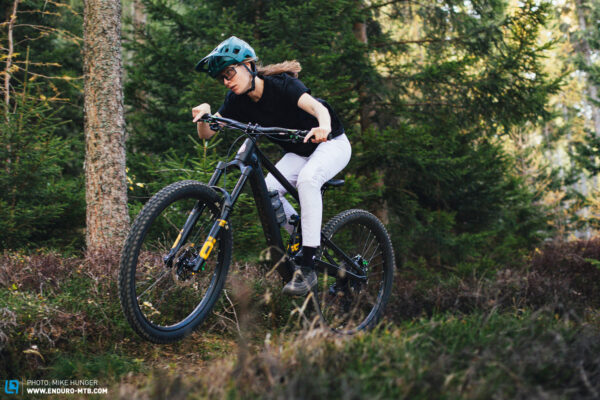
Our conclusion on the 2022 Hope HB916
The 2022 Hope HB916 is a bike for individualists and aficionados, and it’s an absolute looker on the trails. The build offers a lot of customisation options and, apart from the tires, the components have been sensibly specced. On the trails, the HB916 requires an active riding style, putting a smile on your face with its agile and playful handling. The firm suspension also invites you to catch air and pump the bike through dips and rollers to generate speed.
Tops
- agile handling
- a high recognition value
- good all-round characteristics
- an exotic package
Flops
- the tires don’t do the bike justice
For more information about the HB916, visit the Hope website.

Did you enjoy this article? If so, we would be stoked if you decide to support us with a monthly contribution. By becoming a supporter of ENDURO, you will help secure a sustainable future for high-quality mountain bike journalism. Click here to learn more.
Words: Felix Rauch Photos: Peter Walker, Mike Hunger




